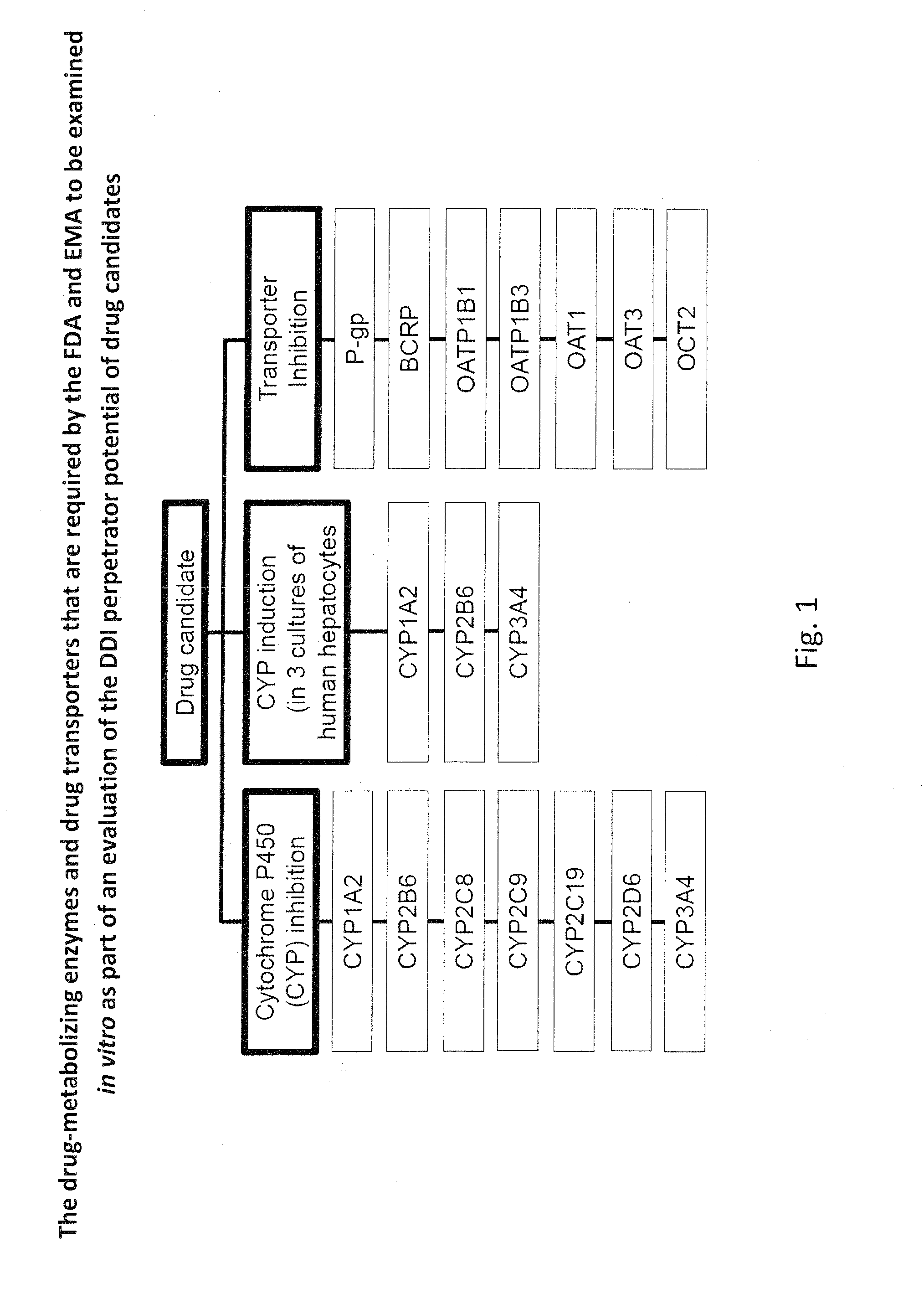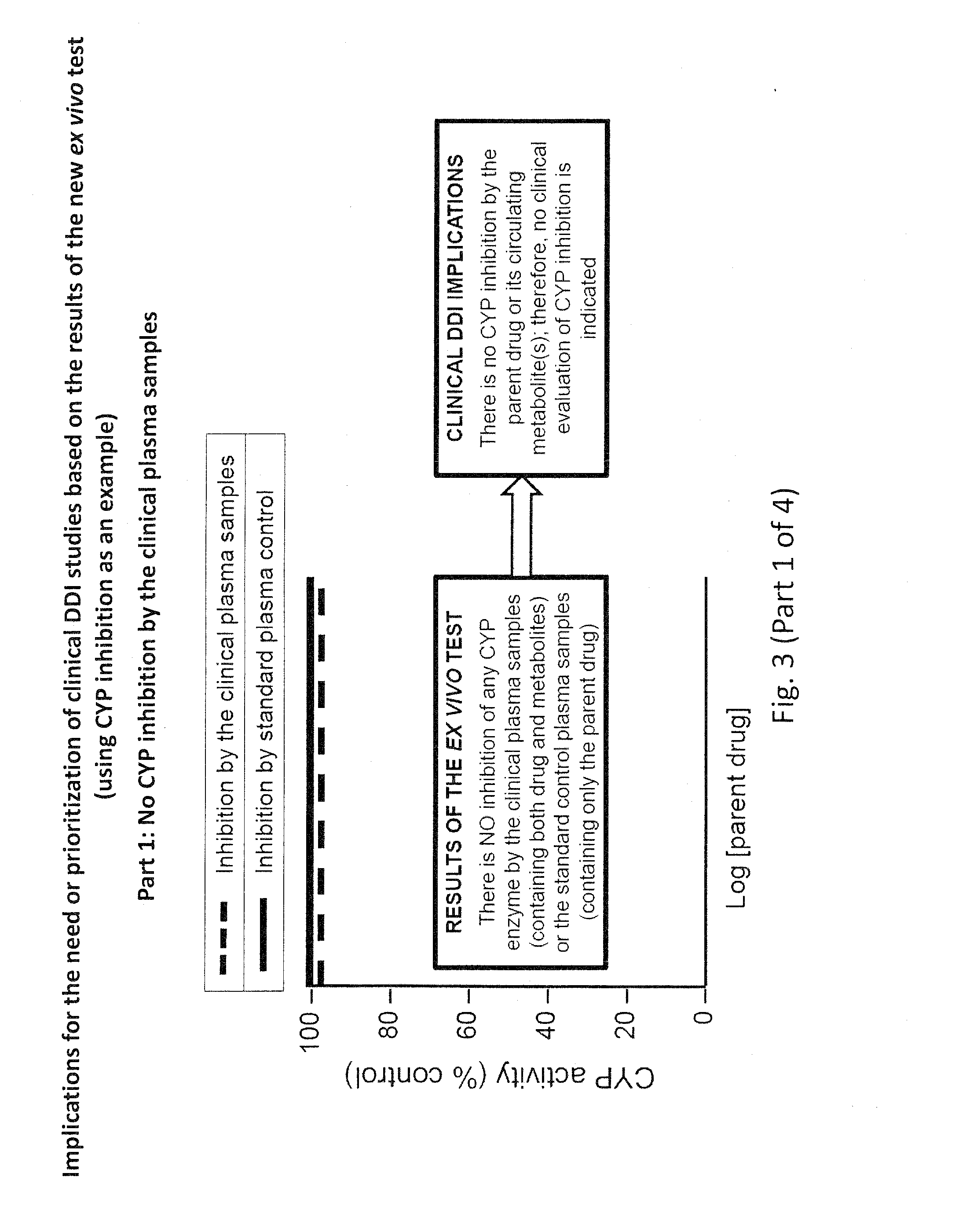Ex vivo methods to identify circulating drug metabolites with drug interaction potential
a drug interaction and ex vivo technology, applied in the field of ex vivo methods to identify circulating drug metabolites with drug interaction potential, can solve the problems of inability to identify the structure or synthesize, high cost and time consumption, and a large burden on pharmaceutical companies
- Summary
- Abstract
- Description
- Claims
- Application Information
AI Technical Summary
Benefits of technology
Problems solved by technology
Method used
Image
Examples
example 1
[0044]The following protocol describes the steps involved in comparing the ability of a clinical plasma sample (containing both drug and metabolites) with standard plasma samples (containing only drug) to inhibit the activity of the various CYP enzymes in human liver microsomes, but the protocol is applicable to other test systems (hepatocytes, cell lines, vesicles, recombinant or purified enzymes or other subcellular fractions) and other endpoints (inhibition of other drug-metabolizing enzymes and transporters and CYP induction).[0045]1. Collect clinical plasma samples, determine the concentration of drug and prepare standard plasma samples:[0046]a. Prepare clinical plasma (or serum) from blood sample(s) collected before and after the administration of the drug under investigation.[0047]b. Determine the concentration of drug in the post-dose plasma sample(s) by LC-MS or another suitable analytical method.[0048]c. If the concentration of drug is high, dilute the clinical sample with...
example 2
[0071]Using CYP inhibition as an example, the addition of the in vivo clinical plasma samples to the in vitro test system (human hepatocytes, human liver microsomes or recombinant human enzymes), which is followed by a measurement of CYP activity, will produce four types of results, which are illustrated in FIG. 3 (Parts 1-4):[0072]1. No CYP inhibition (FIG. 3, Part 1);[0073]2. CYP inhibition due only to the parent drug, as evidenced by the same degree of CYP inhibition by the clinical plasma samples as the control plasma samples spiked with the same concentration of parent drug (FIG. 3, Part 2);[0074]3. CYP inhibition due to both the parent drug and circulating metabolite(s), as evidenced by CYP inhibition by the control plasma samples spiked with parent drug but an even greater degree of inhibition by the clinical plasma samples (FIG. 3, Part 3); or[0075]4. CYP inhibition due only to the circulating metabolite(s), as evidenced by CYP inhibition by the clinical plasma samples despi...
PUM
| Property | Measurement | Unit |
|---|---|---|
| concentrations | aaaaa | aaaaa |
| concentrations | aaaaa | aaaaa |
| concentration | aaaaa | aaaaa |
Abstract
Description
Claims
Application Information
 Login to View More
Login to View More - R&D
- Intellectual Property
- Life Sciences
- Materials
- Tech Scout
- Unparalleled Data Quality
- Higher Quality Content
- 60% Fewer Hallucinations
Browse by: Latest US Patents, China's latest patents, Technical Efficacy Thesaurus, Application Domain, Technology Topic, Popular Technical Reports.
© 2025 PatSnap. All rights reserved.Legal|Privacy policy|Modern Slavery Act Transparency Statement|Sitemap|About US| Contact US: help@patsnap.com



